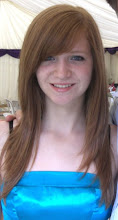This is a clip from the film "Notting Hill" directed by Roger Michell in 1999. It shows use of a two shot, and the effectiveness of using a tracking shot.
The two shot shows Hugh Grant and his friend talking at a table, it is an MS/MLS to show the surrounding (a dingy flat) and their facial expressions. Hugh Grant has his hands to his face, showing despair, which the audience can assume is caused partly by his friend, judging by the frien's expression. The director used a two shot here to show the two characters conversing, and chose the distance MS/MLS to show the location while maintaining the ability to see facial expressions and reactions.
Here, the directors have used a tracking shot to show Hugh Grant's journey through the market and what he encounters, but from an onlooker's point of view as opposed to his. Throughout this one continual sequence, the distances gradually change, from MLS, to MCU, to MS, to VLS. The continual changing allows the viewer to focus on different things at different points, such as the foreground of market stalls and people, to his face, to various other characters, such as his flatmate's scatty girlfriend, and a lady with a baby. This use of tracking is very effective and provides a good transition between scenes in the movie.
This is a clip from "The Notebook" directed by Nick Cassavetes in 2004. This scene uses a range of shot types. It starts with a VLS to show the lake full of swans that the boat is on. This shot is effective because it focuses on the beauty of the swans with the boat in their midst, giving the audience an idea of the characters' view from the boat. The next shot is a crane shot, showing the formation of the swans in the lake and the pretty patterns they make in the lake around the boat. This shot is great as it is a very unusual sight, so to see it from such a high angle gives a lot of impact.
There are several LS's where the characters are in the boat, showing them as well as their surroundings. When in conversation, the characters are shown in an MCU to show their facial expressions and a bit of the background. They are positioned to the side of the frame in an interviewee-like manner and they are looking slightly to the side, because they are talking to each other. This decision was made because it clearly shows they are in conversation.
Later on in the clip the director uses a CU within a two shot when the characters are kissing, to show their passionate expressions. When Allie walks down the jetty after getting off the boat, the director uses a steadicam/handheld shot as if the camera were on the boat. This gives it a very naturalistic and believable feel. When Noah is still on the boat, the camera shows him with a high angle from where Allie is (looking down), and she is shown with a slight low angle from where Noah is, to show how he would see her.
There are OTS shots on the jetty and earlier on the boat when they are in conversation, which is a conventional use of the shot and seems familiar. Towards the end of the clip, there is a slight arch shot when Noah and Allie are stumbling into the house to show them at lots of angles.
These are two of my favourite films and I think they use different shot types very effectively.

0 comments:
Post a Comment